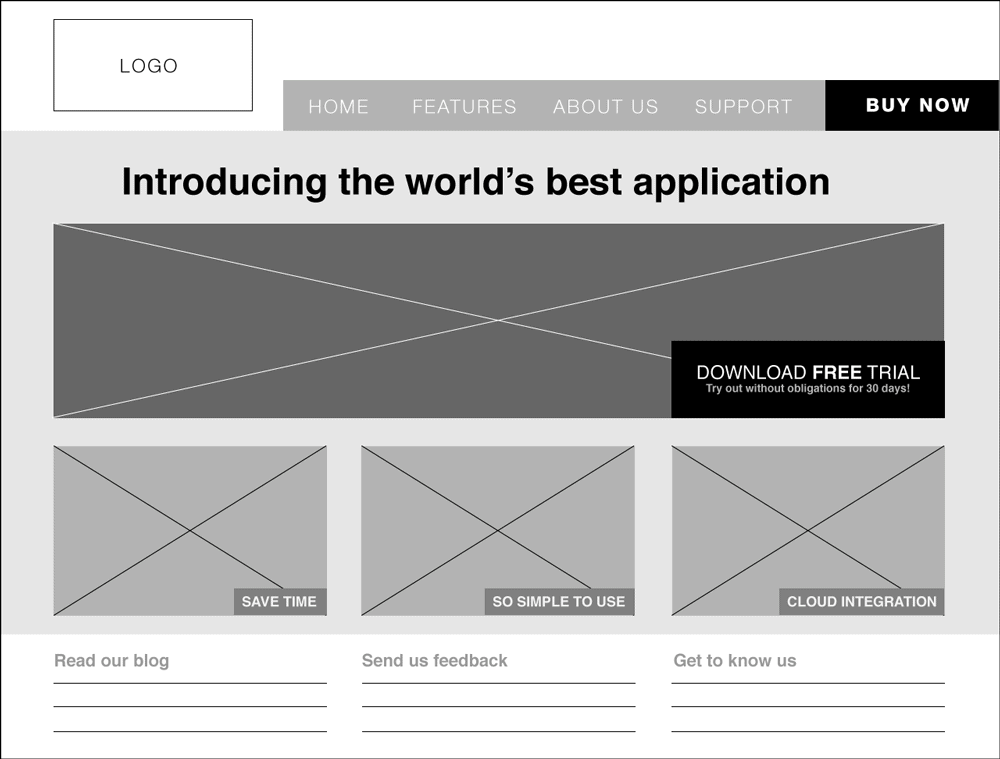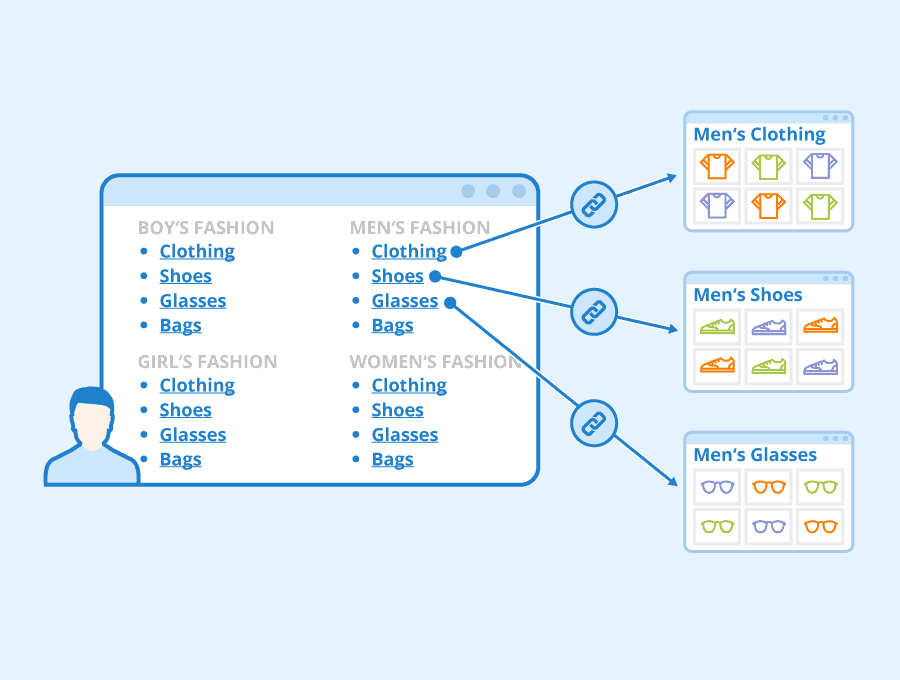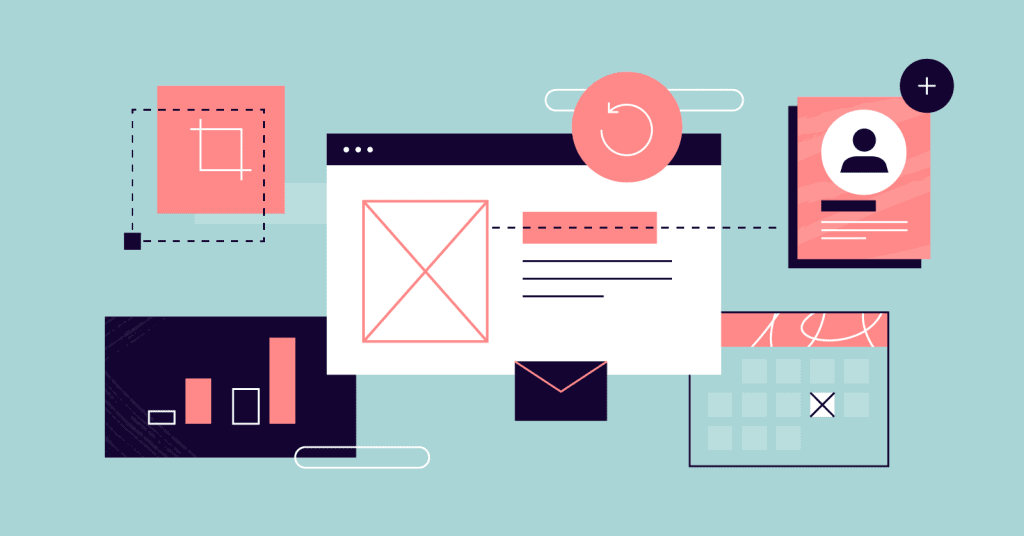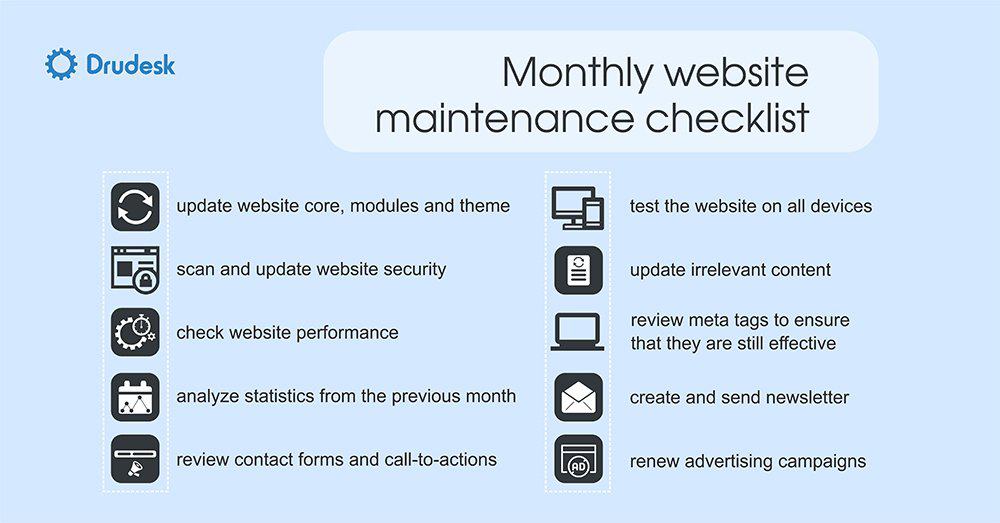Website Design Process: A Step-by-Step Guide
Creating a website can take time and effort if you're new to web design. The many steps may seem complicated and leave you unsure where to start. But they don't have to be so challenging: anyone can learn how to build a beautiful, functional site by following a clear step-by-step guide.
This post will take you through the crucial stages of website construction, from initial planning to launch. You'll understand each phase's purpose and learn about its essential tasks. We've aimed this beginner's guide at people who want their first website or an improved design workflow. When armed with the right approach and tools, constructing a captivating online presence becomes effortless.
By the time you reach the end of this piece, you'll know exactly what goes into professional web design – as well as some best practices – giving you confidence in your abilities in the future. Let's dive in!
Table of Contents
The Website Design Process in 8 Simple Steps
1 – Understanding Client Requirements

Data about the project's objectives, target audience, and the client's business must be collected to begin the website design process. This initial step is vital because it sets the groundwork for everything else.
By understanding what a client wants to achieve, a design team can define why a website should exist and which problem(s) it needs to address.
For example, someone would like an online shop selling handmade jewellery. It's important to know who they are trying to sell to – perhaps individuals searching for unique pieces or fashion enthusiasts.
Understanding what a business does means everyone knows what they are working towards and can create something focused on catering to users' needs.
It is essential to have defined goals that are measurable so you can determine how successful your creation has been. This also helps manage expectations and allows better communication between clients and creators.
2 – Planning and Research

Once we know what the customer wants, planning and researching is the next stage in designing a website. This means gathering all the information we need for the project and creating a timetable.
Good planning ensures that our work is efficient and stays within budget. It also provides that everything happens when it should – so nothing falls through the cracks or causes delays.
Research is vital, too: it keeps us up-to-date with design trends and suggests new ideas. Knowing what works well in this area helps us create an attractive, modern website that connects with visitors.
It's also helpful to find out whether specific design elements or functionalities are associated with your sector – say, on travel websites or e-commerce sites. If there are, making them part of your site could give you an edge over competitors who don't yet have them.
Something else to think about before we get started is search engine optimisation (SEO): how can we make sure as many people as possible see your new site?
One way of doing this is by conducting something called keyword research – where we analyse which words potential customers use when searching online for someone who does what you do; another is creating content that's compelling enough to be shared across social media networks like Twitter, Instagram, Facebook or LinkedIn.
By finding out how people ‘find' businesses like yours online – then using these insights when creating your website copy -we hope our work will rank highly on Google and other search engines from day one, increasing organic traffic by getting seen more often than competitors.
For instance, if you operate a bakery in London (say), specific keywords might be popular among people looking for bread-based products near them right now. By including some or all of these terms somewhere appropriate in its web copy – perhaps under headings like ‘artisanal pastries' or ‘freshly baked bread' -your business could appear higher up Google's rankings whenever somebody searches for them in your area.
The final part of the planning and research process is reviewing existing or entirely new content. It's a key website ingredient, as it conveys your brand's message to visitors, engages them and imparts valuable information about whatever you're selling.
During this phase, our job is to ensure that all the words on your site are working hard towards its goals and appealing to the people who matter most, namely, those more likely than others to buy from or hire you.
We do this by developing copy (with help from people like copywriters) that ticks all these boxes while staying true to our other work so far.
3 – Wireframing and Prototyping

Wireframing and prototyping are two vital practices that enhance the visual design of a website. Wireframing is creating a layout for the web pages and devising their structure, while prototyping involves designing an interactive interface.
Wireframes are used to find where to place different elements on the page, including navigation menus, calls-to-action and sections with content. They show how the webpage will be laid out and create an idea of user experience.
Another critical step in wireframing is building an information architecture. The goal is to organise content so users can easily navigate it and quickly locate what they want. By having straightforward site navigation, you can improve user experience.
Prototypes expand upon wireframes by making them clickable or interactive interfaces that enable testing with users during research phases before development begins. Testing prototypes allows designers to work out any usability issues before they go live and test again after making changes based on feedback from real people accessing them.
For example, When working on designs for an e-learning platform's website, during the wireframes stage, you would have sketches of how the homepage looks – as well as course pages or a user dashboard if needed – showing where elements like course navigation menus might sit along other vital features like progress trackers or areas containing actual learning materials.
Building UX tools: UI kits
Many design tools offer UI kits if you need reusable components for your most frequently used UI patterns (e.g., buttons) when creating mockups.
These collections of assets save time because designers don't have to recreate everyday objects from scratch each time they build something new. Templates are usually available, too, so that projects can begin from familiar foundations.
You'll want one tool that offers both ease of use and robustness; Sketch has become quite popular among Mac-using designers because it strikes this balance nicely while being compatible with third-party offerings like Zeplin and InVision.
Bohemian Coding's Sketch is an award-winning macOS app that offers a bitmap editor for professionals needing technology to create pixel-perfect designs. It also helps designers collaborate with stakeholders.
Adobe Creative Cloud is another popular choice among design teams but it requires a subscription.
4 – Visual Design

Design trends and industry best practices significantly impact the look and feel of a website. By staying up to date with the latest design trends, web designers can create visually appealing websites that capture the attention of their target audience.
Consistency is vital when it comes to visual design. That's why web designers work closely with clients during the visible design phase to ensure that all visual elements accurately represent their brand and convey their intended message.
Many web designers create a style guide to ensure consistency across a site. This document outlines things like colour palette, typography choices, and other specific details about how certain types of content should be presented on your website.
Micro-interactions are another thing that good web designers keep in mind when creating visually appealing designs. Small animations or interactive elements are great ways to enhance user engagement with your site and provide users with more intuitive ways to interact with your content.
A simple example would be hovering over something on your site and seeing some animation.
Even though these elements tend to be subtle or understated from an end-user perspective, they're pretty effective at making your website seem more polished or professional – which goes hand-in-hand with overall general credibility.
5 – Development and Coding

The visual design is translated into code using HTML, CSS, and other programming languages. The development phase requires collaboration between designers and developers to ensure the integration of design and functionality. By working together, the design team can provide developers with detailed specifications and guidelines so that the final website accurately reflects the intended design.
The implementation of responsive design techniques is essential during this phase. Responsive designs allow a website to adapt across different devices and screen sizes. With smartphones and tablets becoming increasingly popular for browsing websites, a site must provide a consistent user experience on all devices. For example, suppose a restaurant's web page that offers online food ordering isn't built responsively. In that case, customers might struggle to browse its menu or place an order on their smartphone – two tasks they're highly likely to want to do while out and about.
This means ensuring that anyone who views your website can see everything without having to zoom in; make buttons big enough so people can tap them easily; don't use fonts that are too small; avoid using images that won't scale down well when viewed on smaller screens (as doing so will mean users have to scroll sideways); consider whether some content should be removed altogether from mobiles or hidden behind tabs etc.
Collaboration and regular communication between designers/developers is critical here, so any questions relating to how things should work or look can quickly be resolved.
6 – Testing and Quality Assurance

Thorough testing and quality assurance are crucial before a website is launched to ensure it works properly on different devices and browsers. This phase involves checking for functionality, usability, compatibility across devices and browsers, and security vulnerabilities. Finding any bugs or issues that could affect the site's performance or user experience is essential.
Several techniques can be used for this testing phase. Server testing ensures the site holds up under various traffic conditions and can handle many users making requests. Browser testing checks that the site looks right across web browsers such as Chrome, Firefox and Safari. Design solutions are tested to ensure visual design elements are consistent throughout the site.
Another thing you should do during this part of the process is gather feedback from users – which could involve user surveys or doing user-testing sessions – as these provide invaluable insights into areas where improvements need to be made in terms of usability.
It's vital, too, at this stage, that you validate your website's performance (for example, by running tests that show it loads quickly), its security (by running vulnerability scans) and its compatibility across different platforms (so it works well regardless of whether someone is viewing it on an Android phone or iPhone). Validating these three aspects will help ensure your website provides a seamless experience for users.
7 – Launch and Deployment

Once the website is thoroughly tested, it's time to launch. But a successful website launch involves more than just making your site live. Launching takes some careful planning and preparation to ensure a smooth transition.
One essential step toward that goal is preparing a checklist of everything you need to do before going live. That might include tasks such as finalising content, optimising images, testing forms and contact features, setting up website analytics, and many other things specific to the project you're working on. A checklist helps ensure that no crucial steps get skipped, so there are no issues or errors once your site goes live.
Another thing worth considering for a smooth transition during the “launch and deploy” phase is coordinating with the client's IT team or web hosting provider to ensure everything is configured correctly and ready for go-live day. A contingency plan in case something goes wrong during launching can be helpful, too, mainly if delaying live causes significant business disruption.
During the initial period after your site has gone live, monitoring it closely and addressing any unforeseen issues that may crop up will be essential. This could involve combing through website analytics data to understand user behaviour better, identifying any performance bottlenecks, tweaking various elements of your design or layout, addressing known accessibility flaws or usability problem areas found by early users, making adjustments based on feedback from paid search campaigns – anything that serves to improve how well your new site performs and how easy (or not) people find using it.
8 – Maintenance and Updates

Simply launching a website is not the end of the website design journey. Proper maintenance and regular updates are required to maintain a fresh, relevant and optimally functioning site. Neglecting your website can lead to performance issues, security vulnerabilities or outdated content.
One vital aspect of website maintenance is updating your content regularly. Keep visitors returning while offering value to your target audience by regularly adding fresh, engaging content. This could include updating blog posts, adding new products or services or refreshing existing content to reflect the latest trends in your industry.
Another priority for maintaining an effective website is addressing bug fixes and making necessary changes as user needs evolve or design trends change. By being proactive and responsive to user feedback, you'll keep your site user-friendly and meet changing target audience needs.
Offering ongoing maintenance services will help ensure the long-term success of a client's website. By providing different maintenance packages, you can offer regular updates, security monitoring, and technical support, ensuring that their site performs well and remains secure while also helping strengthen client relationships.
So, for example, design agencies might offer ongoing monthly updates on their client websites – ensuring that all the latest software patches have been applied as part of managing its security – alongside analytics-driven insights into how it is performing technically, taking action where needed to make sure pages load fast enough so users don't abandon them.
Common Mistakes to Avoid
To achieve successful outcomes during the website design process, it is crucial to avoid common mistakes. By being aware of these pitfalls, designers can proactively mitigate their impact and ensure high-quality websites.
- One such mistake is failing to communicate effectively with web developers. Good communication throughout the design process guarantees that a designer's vision accurately translates into the final product. Regular communication and collaboration between designers and developers will help resolve design-related issues or questions promptly, ensuring seamless integration between functionality and design.
- Another blunder that could hamper a website's success is neglecting search engine optimisation (SEO) optimisation. Employing effective SEO strategies helps improve a site's visibility on search engine results pages (SERPs), increasing its online presence and driving organic traffic. Designers can ensure a website ranks well on SERPs by conducting comprehensive keyword research, optimising meta tags/descriptions for relevant terms, and creating good quality content tailored to target audiences.
- Using generic imagery/ language that does not match brand identity is another standard error when designing websites. Creating consistent visual designs that represent brand identity and resonate with target audiences is also essential. Selecting appropriate images that are visually appealing, incorporating the brand colour palette/typography, and using language that captures the voice/values of your company – all this combined will help establish trust while making you memorable.
- Forgetting about incorporating effective calls-to-action (CTAs) may also hinder user engagement/conversions within your site. Calls-to-action are crucial elements of any website because they guide users toward desired actions like purchasing/signing up for newsletters. Design CTAs should be persuasive via visually bold elements and colours used – getting them right will delight users, so give immense thought when choosing designs.
- Neglecting maintenance is an error because it can lead to performance/security problems down the line. Maintaining and updating sites regularly ensures they remain secure, relevant and up-to-date. Regular backups, monitoring for security vulnerabilities, and addressing performance bottlenecks (like slow load times) are necessary to ensure people have a seamless experience.
- Forgetting to set up analytics to track website performance is another standard error. Analytics provide invaluable insights into user behaviour/traffic sources/website performance metrics. Set up analytics tools and analyse data regularly, as they give designers actionable insights that can be used to improve a site's user experience/performance, driving further success.
Conclusion
To sum up, designing a website comprises multiple critical steps designed to ensure successful outcomes. Understanding what the client wants, doing enough research and working organised is essential. Wireframing and prototyping, visual design, development and coding, testing and quality assurance, launch and deployment, and ongoing maintenance and updates make it possible for a designer to create something to help clients meet their goals.
Not making mistakes along the way – such as unclear communication with clients or failing to think about SEO optimisation – can also play a part in ensuring success. Ultimately, what's needed is a comprehensive approach that helps businesses ensure they have everything right when it comes to creating effective websites that engage users and deliver results.
In short, how you go about designing your website matters.
